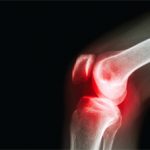In individuals without radiographic knee osteoarthritis (OA), Chang et al. investigated whether magnetic resonance imaging (MRI) defined knee OA at baseline was associated with incident radiographic and symptomatic disease during up to 11 years of follow-up.
Early identification could provide a window of opportunity for timely efforts to prevent disease development and early progression, minimize symptoms and preserve function.
A recent review revealed that 72% of studies of early stage knee OA incorporated radiography in defining the condition. However, radiography is limited by its poor sensitivity in detecting early structural changes. In contrast, MRI allows for comprehensive multiplanar visualization of various joint tissues known to be affected by knee OA before the established signs of radiographic OA—osteophyte presence and joint space narrowing—are present.
Methods
Osteoarthritis Initiative participants without tibiofemoral radiographic knee OA at baseline were assessed for MRI-based tibiofemoral cartilage damage, osteophyte presence, bone marrow lesions and meniscal damage/extrusion. The researchers defined MRI knee OA using alternative reported definitions. Definition A requires assessment of cartilage damage, osteophyte, subchondral bone marrow lesion, meniscal damage or extrusion, and bone attrition, and definition B requires only assessment of cartilage damage and osteophyte presence.
Kellgren-Lawrence grade, joint-space narrowing and frequent knee symptoms were assessed at baseline, 1-, 2-, 3-, 4-, 6-, 8- and 10/11-year follow-up visits. Incident tibiofemoral radiographic knee OA (outcome) was defined as 1) Kellgren-Lawrence grade of 2 or greater; 2) Kellgren-Lawrence grade of 2 or greater and joint space narrowing; or 3) Kellgren-Lawrence grade of 2 or greater and frequent knee symptoms. Adjusted Cox proportional hazard regression models examined associations of baseline MRI-defined knee OA with incident outcomes.
Results
Among 1,621 participants, 17% had MRI-defined knee OA by definition A and 24% by definition B. Baseline MRI-defined knee OA was associated with incident Kellgren-Lawrence grade of 2 or greater (odds ratio 2.94 for definition A and 2.44 for definition B). However, a substantial proportion of individuals with baseline MRI-defined knee OA did not develop an incident Kellgren-Lawrence grade of 2 or greater during follow-up (59% for definition A and 64% for definition B). Findings were similar for the other two outcomes.
Conclusions
In conclusion, the two current MRI definitions of knee OA may not adequately identify knees that will go on to develop radiographic and symptomatic disease.
For complete details, including source material, refer to the full study.
Excerpted & Adapted From
Chang AH, Roemer FW, Guermazi A, et al. Do existing MRI definitions of knee osteoarthritis identify knees that will develop clinically significant disease over up to 11 years of follow-up? Arthritis Rheumatol. 2024 Feb;77(2).
